 April is a day to get involved in raising awareness. Why? Today is TOMS Shoes’ One Day Without Shoes. One Day Without Shoes is a time dedicated to raising awareness about world health issues that arise when one does not have access to a pair of shoes. Many children around the world go without due to economic factors. Children who do not have shoes to wear daily are more prone to diseases such as Hookworm and they are more prone to infection form injuries.
April is a day to get involved in raising awareness. Why? Today is TOMS Shoes’ One Day Without Shoes. One Day Without Shoes is a time dedicated to raising awareness about world health issues that arise when one does not have access to a pair of shoes. Many children around the world go without due to economic factors. Children who do not have shoes to wear daily are more prone to diseases such as Hookworm and they are more prone to infection form injuries.
One Day Without Shoes is a great example of “slacktivism.” What is “slacktivisim?” Slacktivism is a way to give back to the community without directly doing acts of service. It is a way to not only make a difference for a beloved cause, but it is also a way to make someone feel good about him or herself due to a simple act of good.
Interested? Below is a list of other forms of slacktivism that you can participate in year round!
-
Use your money for good: Choose brands that support causes or sustainable practices. TOMS is a great example, whether you are buying their shoes or eyewear your purchase will go to a good cause. Other examples of brands that are
 making a difference are Warby Parker and Patagonia.
making a difference are Warby Parker and Patagonia.
- Tweet, tweet: Use Hashtags to support your favorite causes. Many organizations and brands will designate certain hashtags to be used for their campaigns. You can not only show your support, but also network with people who share your passion.
- Clicking for good: Show your support by liking your favorite brands and organizations on Facebook or other social media channels. It will help you stay up to date on the latest news and happenings occurring at the organization.
- Donations: Many organizations or brands will donate proceeds to a cause through clicks. If your organization is doing this make sure you click to help out!
- Donate your status: Donate your Facebook status or profile picture to a cause. It will help your friends and followers understand your passions and will help get the organization’s mission and message out!
-
Wear a ribbon: Do you support a cause that is represented by a certain color? Wear a ribbon showing your support.
 When others ask you about it you can tell them to help show support for the cause.
When others ask you about it you can tell them to help show support for the cause.
- Watch a documentary: Interested in a cause, but you do not know much about it? Check out a documentary that informs. Invite your friends or family to watch it with you to get the discussion going!
We hope these ideas get you out there to show your support for your favorite causes and organizations! Whatever you are interested in, find a way to get the word out around your community.
How are you showing support for your favorite cause? Share with us in the comment section below, we would love to hear about it!

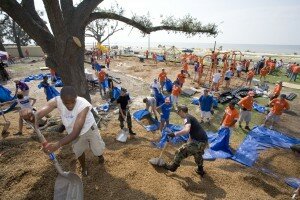 We absolutely love volunteers! Not just because we are a nonprofit organization focused on volunteer listings and opportunities, but also because they are just plain awesome! Why?
We absolutely love volunteers! Not just because we are a nonprofit organization focused on volunteer listings and opportunities, but also because they are just plain awesome! Why?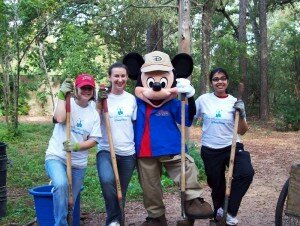 like without those 8.1 billion hours!
like without those 8.1 billion hours!

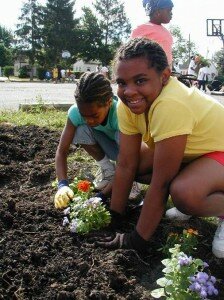 Today at
Today at  to play a role in the garden activities. These members will be vital in funding the garden, keeping up with its maintenance, and planning events.
to play a role in the garden activities. These members will be vital in funding the garden, keeping up with its maintenance, and planning events.
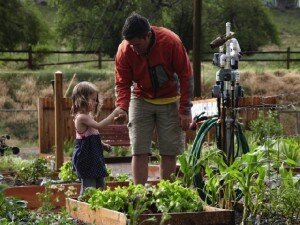 exchange phone numbers or email addresses, it is important that all members can get in touch with each other in case anything comes up. It will also help maintain that sense of community between all those involved!
exchange phone numbers or email addresses, it is important that all members can get in touch with each other in case anything comes up. It will also help maintain that sense of community between all those involved!
 The birds are chirping, bees are buzzing, flowers are blooming, and the pollen is everywhere. Today is the first day of spring! Goodbye cold weather and hello sunny days. Spring is a great time to have a new beginning by getting out and volunteering in your community.
The birds are chirping, bees are buzzing, flowers are blooming, and the pollen is everywhere. Today is the first day of spring! Goodbye cold weather and hello sunny days. Spring is a great time to have a new beginning by getting out and volunteering in your community.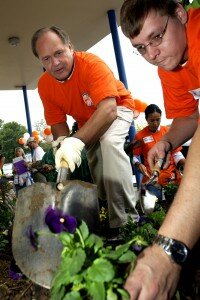 nt flowers, repair playgrounds, or pick up trash. Whatever you can do to beautify your park to make it more enjoyable will make a difference!
nt flowers, repair playgrounds, or pick up trash. Whatever you can do to beautify your park to make it more enjoyable will make a difference!
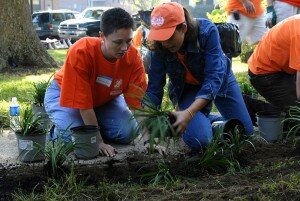
 and places musicians to serve full-time as teachers and mentors in low-performing public schools, youth centers, and other high-need community settings. MusicianCorps uses music to reengage youth in their academic and civic lives, and provide them skills to succeed in the 21st century economy.
and places musicians to serve full-time as teachers and mentors in low-performing public schools, youth centers, and other high-need community settings. MusicianCorps uses music to reengage youth in their academic and civic lives, and provide them skills to succeed in the 21st century economy.
 e. Recognizing his commitment, Mr. H invited Kevin and other students to perform for Veteran’s Day at the Palo Alto VA center. Kevin seized the opportunity. On a day off from school when most of his classmates were still sleeping, Kevin was awake at 7:30am with his guitar in hand ready to be picked up for the performance. “It was cool to play for the Veterans,” Kevin said. “They seemed to enjoy it and some of them came up and played with us.”
e. Recognizing his commitment, Mr. H invited Kevin and other students to perform for Veteran’s Day at the Palo Alto VA center. Kevin seized the opportunity. On a day off from school when most of his classmates were still sleeping, Kevin was awake at 7:30am with his guitar in hand ready to be picked up for the performance. “It was cool to play for the Veterans,” Kevin said. “They seemed to enjoy it and some of them came up and played with us.” an
an 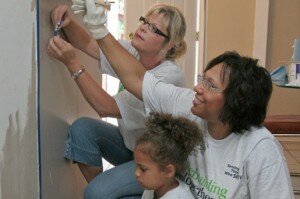 I’d like to share with you a few things I’ve learned over my term so far.
I’d like to share with you a few things I’ve learned over my term so far. service will be felt long after we have left. During “AmeriCorps Works” week, I invite you to think back and remember your own “aha!” moment. What is your purpose and direction in the service field? How do you feed the need to impact others in a positive way? Take some time to refocus on that moment and the resulting actions; it can only increase your commitment to service!
service will be felt long after we have left. During “AmeriCorps Works” week, I invite you to think back and remember your own “aha!” moment. What is your purpose and direction in the service field? How do you feed the need to impact others in a positive way? Take some time to refocus on that moment and the resulting actions; it can only increase your commitment to service!
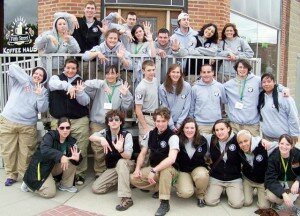 current place of employment to show the diversity in career paths and leadership rules pursued after AmeriCorps. You can share these pictures through AmeriCorps Alums social media with the hashtag #AmeriCorpsWorksHere.
current place of employment to show the diversity in career paths and leadership rules pursued after AmeriCorps. You can share these pictures through AmeriCorps Alums social media with the hashtag #AmeriCorpsWorksHere.
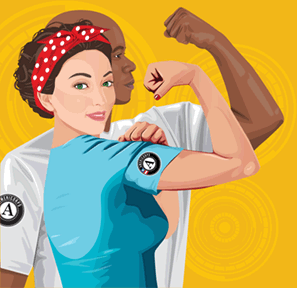 will take place Tuesday, March 13 from 3 to 4:30 PM ET. Participate in this
will take place Tuesday, March 13 from 3 to 4:30 PM ET. Participate in this 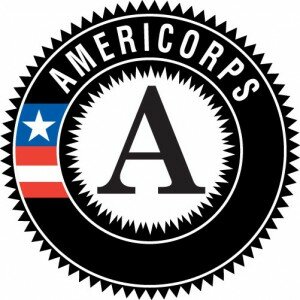 Hooray, hooray! Happy AmeriCorps Week everyone! Let’s kick off the week by explaining what exactly AmeriCorps is, in case you still do not know.
Hooray, hooray! Happy AmeriCorps Week everyone! Let’s kick off the week by explaining what exactly AmeriCorps is, in case you still do not know. intensive service in community programs. Members have the opportunity to serve in a variety of agencies including faith-based, community organizations, higher education, and public agencies. Their goals are to raise awareness in the fields of education, environment, public safety, and health. They engage in direct service such as after-school tutoring, volunteer recruitment, and capacity building.
intensive service in community programs. Members have the opportunity to serve in a variety of agencies including faith-based, community organizations, higher education, and public agencies. Their goals are to raise awareness in the fields of education, environment, public safety, and health. They engage in direct service such as after-school tutoring, volunteer recruitment, and capacity building.
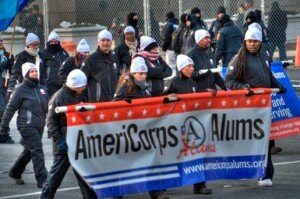 Civilian Community Corps. Their goal is to strengthen communities, while building leaders out of team service. NCCC members focus on aiding national crises.
Civilian Community Corps. Their goal is to strengthen communities, while building leaders out of team service. NCCC members focus on aiding national crises.

 In 2010, it was
In 2010, it was  are great sources to not only find volunteering opportunities, but also to get facts on hunger and who it affects.
are great sources to not only find volunteering opportunities, but also to get facts on hunger and who it affects.
 neighborhood. You can donate the proceeds to your community’s soup kitchen, food bank, or your favorite hunger cause.
neighborhood. You can donate the proceeds to your community’s soup kitchen, food bank, or your favorite hunger cause.

